Why Wet Block a Lace Cowl?
Wet blocking, although time-consuming, is essential for some lace knit projects as it is the best way of bringing out the beauty of the lace knit patterns. Alternatively, some people like to steam block a lace scarf.
The elegant “Robyn” cowl is designed by Anniken Allis and was published in Lets Knit Magazine.
I knit the cowl as a birthday present for mum. I used Zenith, one of the lovely hand-dyed sock yarns made by Flamboyance Yarns, that I had in my stash. The colours are subtle and I loved how they drifted into each other.
The cowl has a pretty shaped edging which needs to be wet-blocked to create the sharp points.
Wash the Cowl
- Use a mild detergent and cool water to wash the cowl gently. Be careful not to use too much agitation or rub the fabric as this can cause the wool to felt.
- Rinse the cowl until the water runs clear after the final rinse. This can be a slower process when using a hand-dyed yarn.
Remove Excess Moisture
- Lift the cowl out and gently squeeze excess water but do not wring the cowl.
- Place the cowl on a folded towel and roll the towel up.
- Apply pressure to remove the water. I stand on it.
- It is important to remove as much of the excess water as possible as you want the cowl to dry as quickly as possible. But you need to be careful with wool as it is easy to felt the yarn.
Blocking Surface
People use many different surfaces for pinning out their projects. You can use:
- A spare bed
- A folded towel (I find that the knit garment dries quicker than a cotton towel and that the towel can cause my project to stay damp for longer than necessary)
- A blocking board
- Floor mat tiles (made for children to play on)
I use the last option. I like the floor mat tiles for several reasons.
- The tiles are slightly larger than 30 cm x 30 cm squares so they are easily stored.
- They slot together like a large jigsaw.
- The mats work well for pinning.
- They have a slightly textured surface which allows a little air movement.
- They allow for flexibility in size for any project that I need to block; from a fingerless mitten to a long scarf.
Pinning Out the Cowl
- Place the cowl on top of the mats. (I used two of the mats for blocking the cowl.)
- I used my long extra fine quilting pins. I find these good to use as they aren’t inclined to rust or leave marks.
- Flatten the cowl out so that it looks even in shape.
- I measure to make sure that the length of the sides is the same. I like my Omnigrid Patchwork rulers, partly because they are clear, but also because they have a grid on them which I find helpful.
- Start at the top and pin the top edge so that it is even and straight.
- Then pin the sides, measuring as you go to make sure they are even. Make sure that you place enough tension on the knitting to open up the lace pattern but not enough to stretch the cowl out of shape.
Blocking the Lace Edging
- The main reason for wet blocking a lace knit project like the cowl is to bring out the beauty of the edging. This requires blocking and careful pinning to obtain the sharp points.
- Start at the centre point and then gradually work out to the edges. Pin each point as you go.
- Stretch the points gently so that the desired shaping is obtained to open up the lace pattern.
Drying
- It is important to dry the cowl as quickly as possible so that the piece doesn’t begin to smell.
- Leave the pinned-out cowl in a warm ventilated room to dry.
- The cowl must be completely dry before being unpinned.
- For my “Robyn” cowl it took 2 days to dry completely.

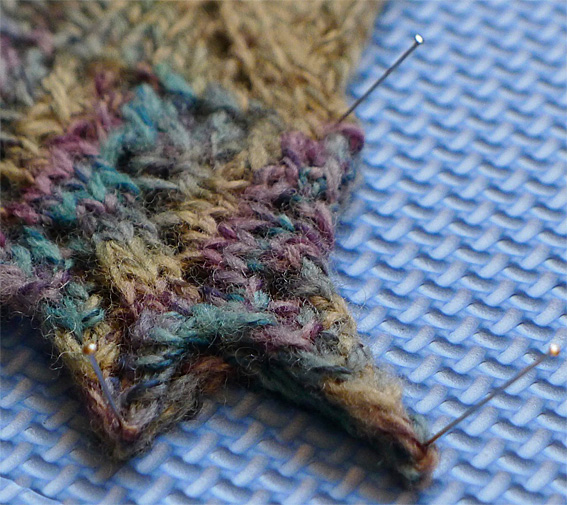
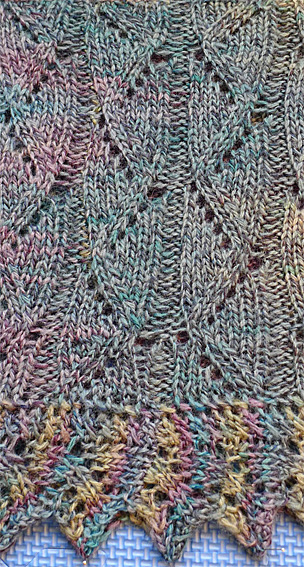
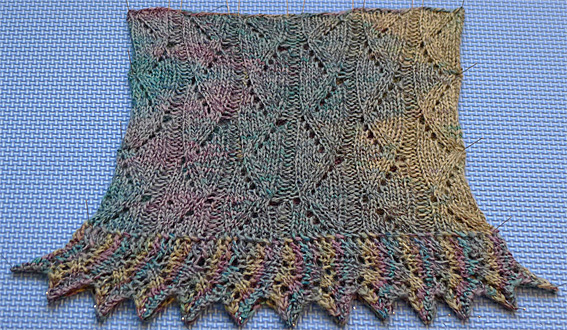
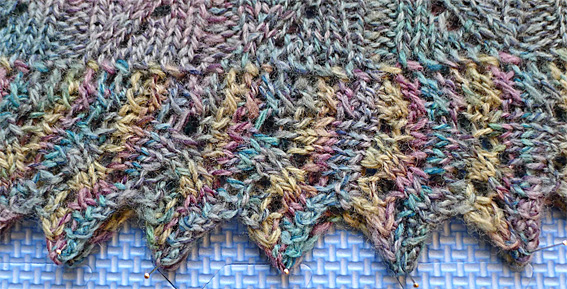
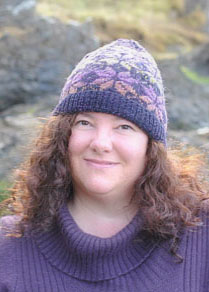
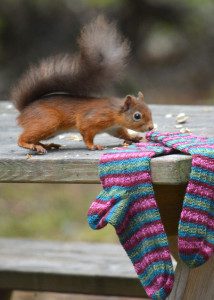
Problem I have when blocking cowls and drying them flat is that they get a flat crease and aren’t rounded any more which I hate. I can’t think of a way round this though……
Hi Sally, if it is a straight sided style of cowl (basically a tube) you could roll up a bath towel and place your cowl over that, you don’t want it over stretched. It is trickier with a shaped cowl and I tend to pin it on the mat. I wonder what other people do to avoid the crease line? Nicolette
check out “confident knitting” on YouTube–she has a couple of methods for avoiding the dastardly crease
I will do, thank you for the suggestion!
Thanks for this. It was really clear and easy to follow, very helpful.